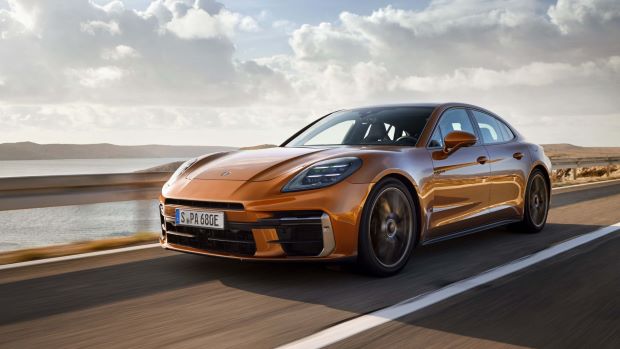
A number of tech outlets recently reported that Google made an interesting change to Google Maps in Android Auto. Until now, one of the default links was a tool to find a gas station, but now, when you run Google Maps in an EV, it knows that you wouldn’t want gas, and behaves accordingly. Now, the tool for finding EV charging stations is just one tap away.
It Works, But Google Needs To Provide More Filters
I decided to go check the feature out and see if it works as advertised in my Bolt EUV. And, yes, it does. By default, the phone knows I’m in an EV and automagically offered me charging stations instead of gas stations.
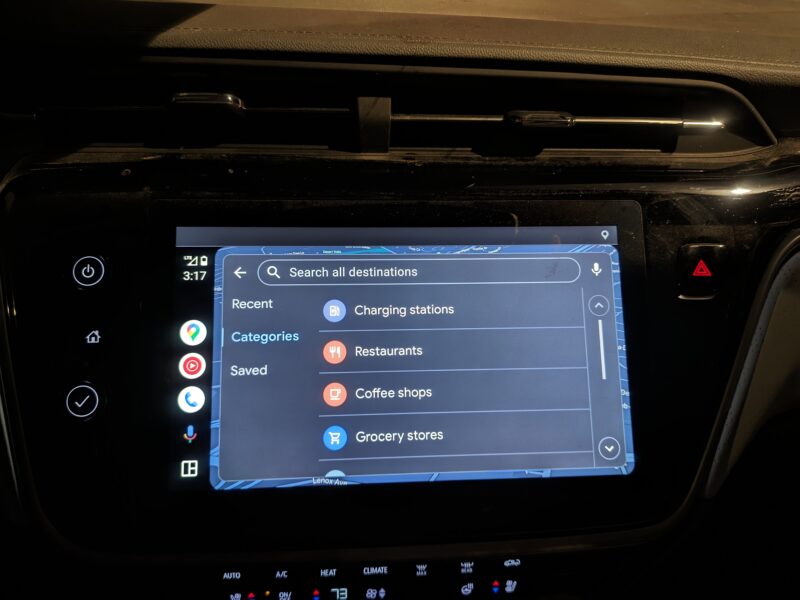
So, I clicked on the link to see what kinds of charging stations it would show me. It indeed showed several nearby charging stations. But, they were mostly Level 2 stations.
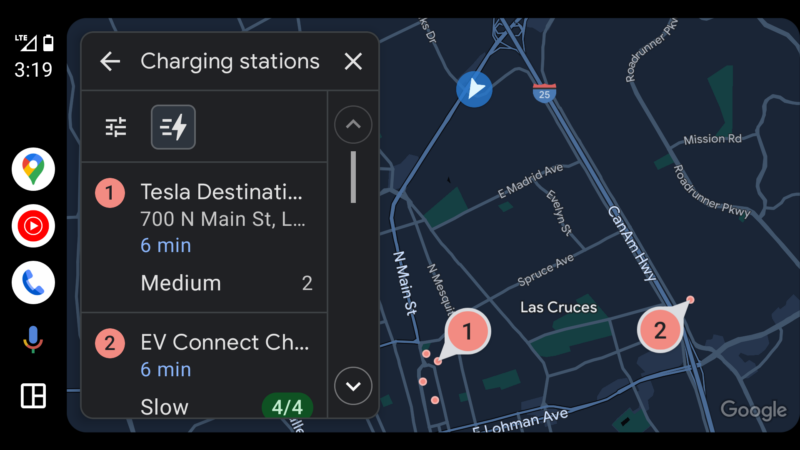
Sadly, it showed me a Tesla destination charger, which my car is not compatible with unless I use an adapter. I do have an adapter, but I also know from local experience that I wouldn’t have needed it. The charging station in question is actually out of date, and the city has replaced them with Chargepoint J-1772 stations. So, it shows the wrong stations for my car and the information is out of date.
When I reached for the filters, this is all it offered:
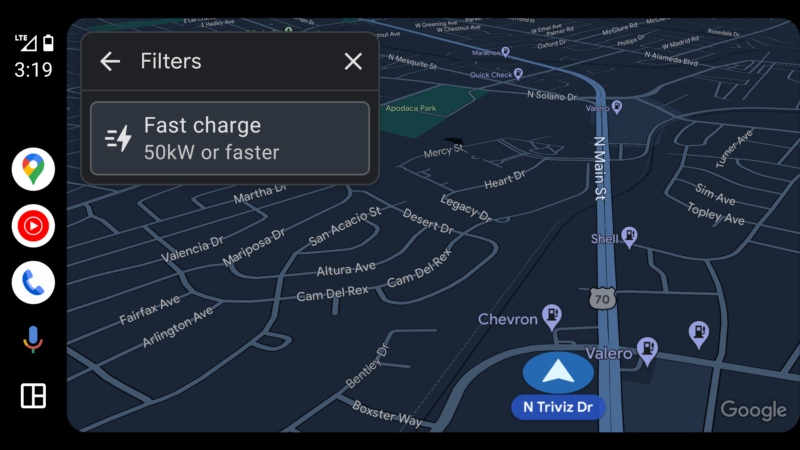
While I am glad that the software can offer me a choice of L2 or L3 charging stations, it doesn’t let me choose CCS or Tesla Supercharging (or CHAdeMO for that matter). So, when I selected the filter for 50 kW or greater, it gave me a CCS charger nearby (good) and a Tesla Supercharger (bad, because Bolts can’t charge at those yet).
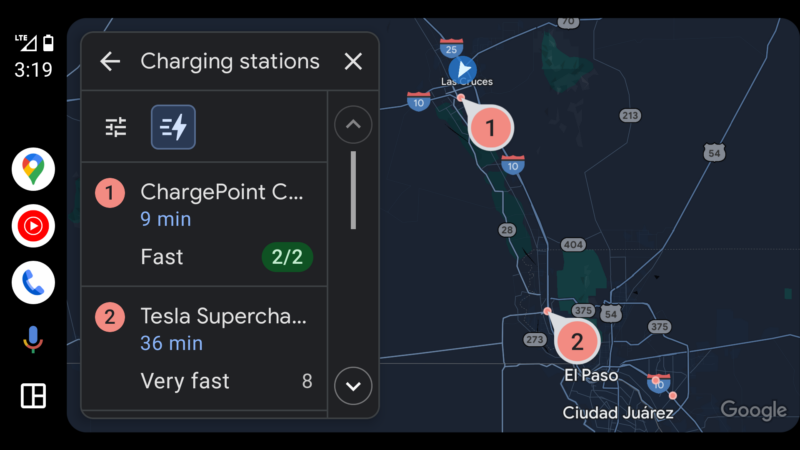
Even worse, it doesn’t know that the dealer chargers it pointed me to were closed at night, and that there was another CCS station closer than El Paso.
So, in the end, it’s a cool feature, but it’s severely lacking in up-to-date information and the ability to customize the stations it shows you for your vehicle. Google needs to work on both of those aspects of things. It would also be good for them to work on making an integrated trip planner to make it more useful.
It’s worth noting that I’m running Android Auto on my phone, and not some form of Google Maps that runs on the car’s computer itself. I’ve read that cars with built-in Google Maps are better about at least some aspects of this, and have been for a while.
Some Norms Never Change. Others Do.
Now, let’s talk about what kind of a milestone we’re looking at here. I’ll start with a personal anecdote we can compare this to, and then talk about how, at least for EV drivers, the norm of burning fossil fuels is starting to lose its grip on the public mind.
Sometimes, the assumptions of strangers can be a little annoying when you’re a lesbian. Because married women are usually married to a man, people will immediately move next to asking about my husband. But, there’s one problem: I don’t have one. I’m not deeply offended by this, because I know I’m part of a small minority, and that people don’t mean anything offensive (usually), but I know to almost always expect servers at restaurants to ask if my wife and I are “together or separate” for the check, and I know there’s often an awkward conversation coming whenever my doctor’s office gets a new nurse or medical assistant (yes, I’m sexually active, but I’m not worried at all about becoming pregnant LOL).
There’s a fancy word for this: heteronormativity. Being straight is the norm. Always has been. Always will be.
My hands were beaten with a ruler in school whenever I wrote left handed. They would tie my left hand/arm behind my back at school so I wouldn’t be tempted to use it.
— Just Dobbs 🐳 (@DobbsnDallas) March 11, 2023
Aside from the weird fears of a few lunatics, there’s no risk at all of that ever changing any more than left-handed people are going to ever outnumber right-handed people (another thing that’s the norm). A few of us are different, and our numbers may grow when stigma gets removed, but when left alone, our numbers eventually level out. There have always been a few of us weirdos, and the human race has always managed to not go extinct (yes, I’m looking at you, Elon).
But, not all change in society is like this. Some things really do rise and completely replace what came before. Horses were the primary form of transportation in the late 19th century and there were fears that the streets would eventually get buried in manure, but cars came along and almost completely replaced them in only a couple of decades.
Now, we’re seeing the rise of EVs, and if you’ve been driving EVs for very long, you know that gasnormativity is real, and can be very annoying when the less informed among us don’t get the memo.
Just like what I face at the restaurant or the doctor’s office, the assumption is that if you’re driving a car, you’ll need gasoline, or maybe diesel. Either way, you’re going to need to go to the pumps, right? Right?
What do you mean you don’t need gas? And turn off that idling car you child-hating war criminal!
But unlike me, if you’re an EV driver, that weird charging thing you do is starting to break away from being the “other” and becoming normal enough for app developers to actually make big homescreen changes for. It’s becoming weird to assume that if you’re using Android Auto that you must be sitting there burning gas (and need to get more of the stuff).
So, this is just another sign that EVs have arrived, and will continue to!
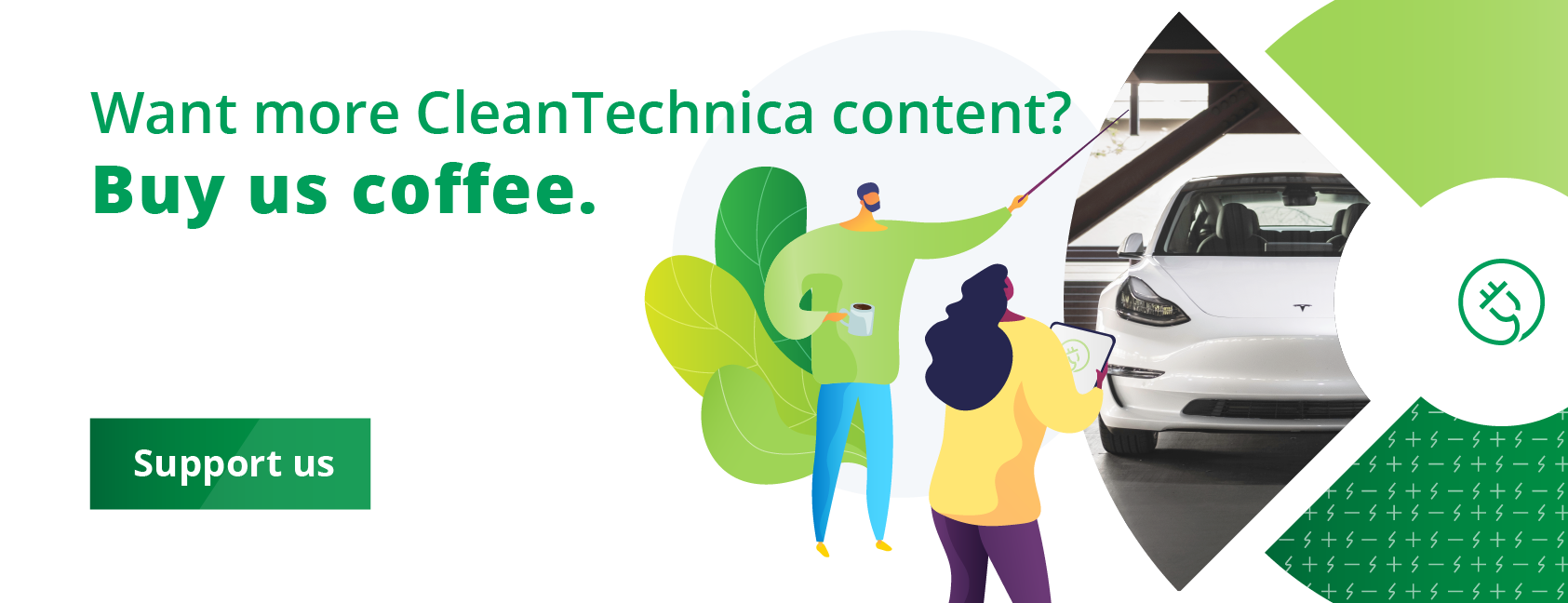
And, this is just the beginning. Companies like Google are becoming aware that they’d better get their software right if they want to serve EV drivers, and EV drivers are eventually going to become the majority of drivers. An app like Google Maps had better be EV friendly, or it risks being displaced by something better.
Hopefully Google knows that they need to keep making it better.
Featured image by Jennifer Sensiba.
I don’t like paywalls. You don’t like paywalls. Who likes paywalls? Here at CleanTechnica, we implemented a limited paywall for a while, but it always felt wrong — and it was always tough to decide what we should put behind there. In theory, your most exclusive and best content goes behind a paywall. But then fewer people read it! We just don’t like paywalls, and so we’ve decided to ditch ours. Unfortunately, the media business is still a tough, cut-throat business with tiny margins. It’s a never-ending Olympic challenge to stay above water or even perhaps — gasp — grow. So …


